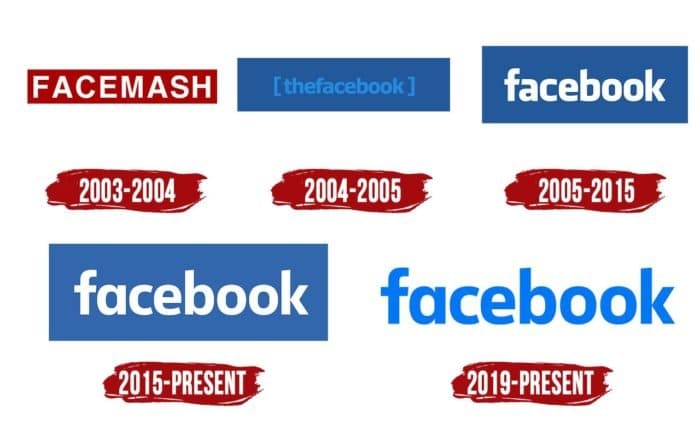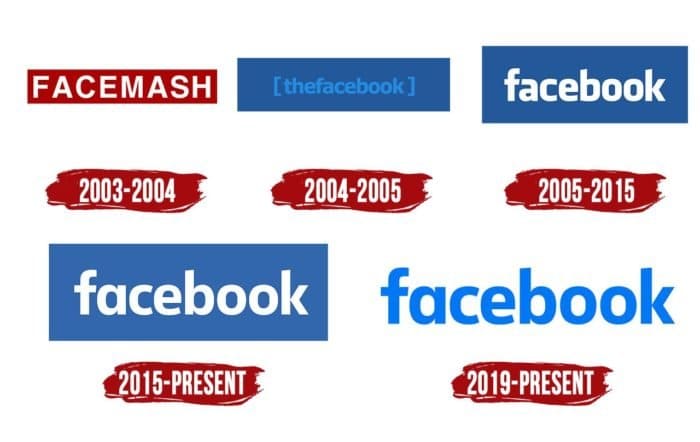
The History of Facebook Infographic A Journey
The history of facebook infographic unveils Facebook’s captivating journey from its humble beginnings to its current global influence. This visual narrative traces the evolution of the platform, highlighting key milestones, innovations, societal impacts, and controversies. We’ll explore the platform’s remarkable growth, from its early days to the present, showcasing the fascinating transformations that shaped its trajectory.
The infographic will delve into Facebook’s initial purpose, its evolution, and the challenges it overcame. It will also examine the platform’s significant milestones, showcasing its innovative features and the impact on users. Furthermore, the infographic will address the social impact, controversies, and financial performance of Facebook. Finally, the infographic will explore Facebook’s global expansion, future projections, and illustrative examples.
Introduction to Facebook’s History
Facebook, a ubiquitous social media platform, wasn’t born overnight. Its journey from a Harvard dorm room project to a global phenomenon is a fascinating story of innovation, adaptation, and overcoming significant challenges. The platform’s evolution reflects the changing social landscape and the relentless pursuit of connecting people worldwide. This exploration delves into Facebook’s early days, highlighting key figures, its evolving mission, and the hurdles it successfully navigated.The genesis of Facebook was deeply rooted in the social networking needs of college students.
Its initial focus was on providing a centralized platform for communication and information sharing within a specific community. This initial purpose laid the groundwork for the expansive social network it became, and its core functionality evolved alongside its increasing user base.
Facebook’s Early Days and Founders
Mark Zuckerberg, along with Eduardo Saverin, Dustin Moskovitz, and Chris Hughes, conceived Facebook as a platform for Harvard students to connect. Initially, the platform was designed for communication and information sharing within the confines of the university. The founders envisioned a space where students could maintain connections, share updates, and stay informed about campus events. This early version laid the foundation for the broader social networking concept that would eventually dominate global communication.
Evolution of Facebook’s Mission and Vision
Facebook’s mission and vision have evolved significantly over the years. Initially focused on connecting university students, it progressively expanded its reach to encompass high schools and eventually, the entire world. The platform adapted to changing user needs and preferences, adding features such as photo sharing, messaging, and events. This evolution reflects the dynamic nature of social interaction and the platform’s commitment to adapting to its users’ evolving needs.
Initial Challenges and Overcoming Them
Facebook’s rise wasn’t without its obstacles. Initial legal battles, concerns about privacy, and adapting to the rapid growth of its user base presented significant challenges. These issues were tackled through legal settlements, revisions to privacy policies, and investments in infrastructure to manage the massive volume of data and interactions. The platform’s response to these challenges demonstrates its commitment to user experience and responsible growth.
Timeline of Key Events
| Year | Event | Description | Impact on Users |
|---|---|---|---|
| 2004 | Launch | Facebook launched as a social networking platform for Harvard students. | Increased social connection within the university community. |
| 2006 | Expansion | Facebook opened to high school students and later, the general public. | Broadened social circles and facilitated connections across demographics. |
| 2009 | New Features | Introduction of features like photo sharing and events. | Enhanced user experience and fostered engagement. |
| 2012 | Acquisition of Instagram | Facebook acquired Instagram, a photo-sharing platform. | Integrated visual communication into the social network. |
Key Milestones and Innovations

Facebook’s journey from a Harvard-dorm-room project to a global phenomenon is marked by a series of key milestones and innovative features. These advancements, from the initial social networking platform to its current suite of applications, reflect a continuous evolution to meet the changing needs and expectations of its vast user base. Understanding these innovations provides crucial insights into the platform’s success and its impact on modern communication.From its humble beginnings as a platform for connecting college students, Facebook has grown into a complex ecosystem of social networking, messaging, and commerce.
This evolution, driven by technological advancements and user feedback, has led to a product that is now deeply integrated into daily life for millions. Key innovations, such as the News Feed, have fundamentally changed how users interact with the platform and consume information.
Chronological List of Significant Milestones, The history of facebook infographic
Facebook’s development has been marked by a steady stream of new features and functionalities. This evolution has shaped the platform into the powerful social media giant it is today. A chronological review of these milestones reveals the incremental growth and continuous adaptation that have defined Facebook’s history.
- 2004: Facebook launches at Harvard University, initially restricted to Harvard students, highlighting the platform’s early focus on community building within a defined group.
- 2005: Expansion to other universities, demonstrating the platform’s potential for wider adoption and demonstrating an early understanding of scalability and expansion.
- 2006: Introduction of the News Feed, a revolutionary feature that allows users to see updates from their friends in a chronological order. This fundamentally changed how users interacted with the platform, moving from a more static profile-centric view to a dynamic stream of updates.
- 2007: Integration of external applications, allowing third-party developers to build applications within the Facebook platform. This fostered innovation and allowed for the creation of a wider range of functionalities and services.
- 2008: Introduction of Facebook Groups, allowing users to connect with like-minded individuals around shared interests. This innovation facilitated the formation of communities and promoted engagement among users with common passions.
- 2010: Facebook Chat integration, which allowed for real-time communication between users. This enhanced the platform’s interactive capabilities and improved the user experience.
- 2012: Acquisition of Instagram, a photo-sharing platform, expanding Facebook’s reach into the visual sphere and offering a different method of user interaction. This move demonstrates Facebook’s strategy of integrating complementary services to broaden its user base and expand its capabilities.
- 2013: Introduction of Facebook Messenger, a dedicated messaging application, highlighting Facebook’s recognition of the importance of messaging and direct communication within its platform.
- 2015: Launch of Facebook Live, allowing users to broadcast live video streams. This innovation broadened the possibilities of communication by allowing for real-time interactions and participation.
- 2019: Introduction of Facebook Marketplace, allowing users to buy and sell items, transforming the platform into a commerce hub. This demonstrated Facebook’s ability to adapt and evolve its services to meet user needs beyond social networking.
Key Innovations Shaping Facebook’s Growth
These innovations fundamentally altered how people interacted, shared information, and conducted business on the platform.
- The News Feed: This innovation revolutionized the user experience by providing a centralized stream of updates from friends and pages. It fostered a more dynamic and engaging experience compared to the static profile views of earlier platforms. This allowed for more organic and frequent user interactions.
- Third-Party Application Integration: The ability for developers to create applications within the Facebook platform expanded the platform’s functionality and allowed for a wide range of services to be accessed within the Facebook environment.
- Acquisition of Instagram: The acquisition of Instagram significantly expanded Facebook’s reach into the visual sphere and provided a new avenue for user engagement.
Comparison of Early and Current Features
Facebook’s evolution is evident in the comparison of its early features with its current functionalities.
| Feature | Year of Introduction | Description | Impact |
|---|---|---|---|
| News Feed | 2006 | Centralized stream of updates from friends | Revolutionized user experience, fostered dynamic interactions |
| Groups | 2008 | Communities centered around shared interests | Facilitated community building and engagement |
| Marketplace | 2019 | Platform for buying and selling items | Transformed Facebook into a commerce hub |
| 2012 | Photo-sharing platform | Expanded visual communication and engagement |
Societal Impact and Controversies

Facebook’s profound impact on society is undeniable, transforming communication, social interaction, and political discourse. Its rise coincided with a shift in how people connect and share information, leading to both unprecedented opportunities and significant challenges. The platform’s massive user base and global reach have made it a powerful force, influencing everything from social movements to political campaigns. However, this power comes with responsibilities and has been met with numerous controversies regarding its policies, practices, and influence.This section delves into the multifaceted societal impact of Facebook, examining both the positive and negative aspects of its influence on communication, social interaction, and political processes.
Ever wondered how Facebook infographics evolved? It’s fascinating to see how visual storytelling has shaped the platform. Knowing how to optimize your content, though, is crucial. Learning about Amazon’s A10 algorithm, for example, amazons a10 algorithm what it is and how you can use it to increase profitability , could help you create more engaging visual content on Facebook.
Ultimately, understanding both the history of Facebook infographics and modern optimization techniques is key to success.
It also explores the controversies that have plagued the platform, including data privacy concerns, misinformation, and the manipulation of public opinion. Furthermore, it assesses Facebook’s responses to these criticisms and the ongoing debate about its role in the modern world.
Facebook’s Influence on Communication and Social Interaction
Facebook fundamentally altered how people communicate and interact. It facilitated the formation of online communities, enabling individuals to connect with others who shared similar interests or backgrounds, regardless of geographical location. This interconnectedness fostered a sense of global community, allowing for the rapid dissemination of information and the organization of social movements. However, it also presented challenges, such as the spread of misinformation and the potential for echo chambers, which can reinforce existing biases and limit exposure to diverse perspectives.
Facebook’s Role in Political Discourse
Facebook’s platform has become a significant arena for political discourse. Candidates use it to reach voters directly, mobilize support, and shape public opinion. Political campaigns leverage the platform to disseminate information, target specific demographics, and mobilize supporters. However, this unprecedented access to political discourse also presented new challenges, including the potential for manipulation, the spread of misinformation, and the impact on the fairness and integrity of elections.
Facebook’s role in shaping political narratives has become a critical topic of discussion and scrutiny.
Facebook’s Data Privacy Concerns and Misinformation
Facebook’s data collection practices have been a significant source of controversy. The platform collects vast amounts of user data, which can be used for targeted advertising and to understand user behavior. The potential for misuse of this data has raised concerns about privacy and the potential for manipulation. The Cambridge Analytica scandal highlighted the potential for data breaches and the misuse of personal information for political purposes.
The spread of misinformation and disinformation on the platform has also become a serious concern, impacting public opinion and potentially influencing political outcomes.
Facebook’s Responses to Criticism and Controversies
Facebook has faced considerable criticism and controversy regarding its policies, practices, and influence. In response, the company has taken various steps to address these concerns, including implementing new policies to combat misinformation, enhancing data security measures, and providing more transparency. However, the effectiveness of these measures has been debated, with critics arguing that they are insufficient to address the underlying issues.
Timeline of Key Controversies
| Year | Controversy | Description | Facebook Response |
|---|---|---|---|
| 2018 | Cambridge Analytica | Data privacy breach involving the unauthorized collection and use of user data. | Public apology and promises to improve data security measures. |
| 2020 | Spread of Misinformation | Increased concerns regarding the spread of false or misleading information during the COVID-19 pandemic. | Implementation of fact-checking partnerships and stricter content moderation policies. |
| 2023 | Political Manipulation Concerns | Concerns about Facebook’s potential role in influencing political outcomes through targeted advertising and data manipulation. | Emphasis on transparency and independent audits. |
Business Model and Financial Performance
Facebook’s journey from a college-based social network to a global tech giant is intricately linked to its innovative business model and consistent financial performance. Understanding how Facebook generates revenue and its overall financial trajectory reveals a story of strategic adaptation and market dominance. The company’s financial success is not simply a result of its size, but also its ability to constantly adapt and evolve its strategies in response to changing market conditions and user needs.
Facebook’s Revenue Sources and Strategies
Facebook’s revenue model is primarily based on advertising. The platform meticulously targets users with personalized ads, leveraging vast amounts of user data to optimize ad relevance and effectiveness. This data-driven approach, while controversial, has been a key driver of Facebook’s financial success. Beyond display advertising, the company also generates revenue through other avenues such as in-app purchases, subscription services, and its family of apps.
Financial Performance Overview
Facebook’s financial performance over the years has been characterized by consistent growth, although recent years have seen fluctuations and challenges. Early years were marked by rapid expansion, driven by user growth and increasing ad revenue. More recent years have seen a more nuanced picture, with challenges like regulatory scrutiny and shifting user preferences impacting the company’s financial trajectory.
This period also saw an evolution in the company’s approach to managing its business, including internal restructuring and adjustments in its advertising strategies.
Ever wondered how Facebook’s infographic history evolved? It’s fascinating how visual storytelling has become integral to social media. While exploring this visual evolution, you might also find yourself interested in Pinterest shopping ads, a powerful tool for e-commerce. Learning about the strategies and targeting options in Pinterest shopping ads can provide valuable insights into how to reach your target audience.
Ultimately, understanding the history of Facebook’s infographics helps you appreciate the broader picture of social media’s visual impact.
Revenue Growth Over Time
The following table illustrates Facebook’s revenue growth over several years. The data provides insight into the key growth drivers and external factors that have influenced the company’s financial success.
| Year | Revenue (USD Billion) | Key Growth Drivers | External Factors |
|---|---|---|---|
| 2010 | 3.7 | Early stage of mobile adoption, increasing user base | Economic recovery from recession, limited social media competition |
| 2015 | 17.9 | Mobile-first strategy, expansion into mobile advertising | Rise of mobile internet usage, increase in global internet penetration |
| 2020 | 85.9 | Continued growth in mobile advertising, diversification of revenue streams | Global pandemic, shift towards digital platforms, evolving user preferences |
| 2023 | 117.8 (estimated) | Enhanced ad targeting, new product launches, global reach | Ongoing regulatory scrutiny, changing user privacy concerns, macroeconomic uncertainties |
Factors Influencing Facebook’s Financial Success and Challenges
Several factors have shaped Facebook’s financial success and challenges. The company’s early success was fueled by the rapid adoption of social media and its ability to connect people globally. However, evolving user expectations, regulatory pressures, and shifting market dynamics have created new challenges. For example, user privacy concerns and data security issues have been a significant concern for investors and users alike, impacting the company’s reputation and financial performance.
In response, the company has undertaken significant measures to address these concerns. Furthermore, competition from other social media platforms has intensified, and new trends in digital media have emerged, making it essential for Facebook to continually innovate and adapt to remain competitive.
Facebook’s Global Expansion and Influence
Facebook’s journey from a Harvard University-based social network to a global behemoth is a testament to its adaptability and shrewd business strategy. Its expansion into diverse countries and cultures has been a complex process, shaped by technological advancements, political landscapes, and evolving societal norms. This expansion has had profound impacts on local communities and societies, while also raising concerns about privacy, misinformation, and cultural appropriation.Facebook’s expansion strategy wasn’t a uniform approach.
Instead, it tailored its tactics to specific regions and cultures, often partnering with local companies and influencers to build trust and navigate complex regulatory environments. This nuanced approach enabled Facebook to tap into a vast global audience and achieve remarkable growth. However, this very global reach has also brought a spotlight on the diverse impacts of its presence, positive and negative.
Facebook’s Expansion Strategy Across Different Countries and Cultures
Facebook’s expansion into new markets was often driven by a combination of factors, including strategic partnerships, local language support, and cultural sensitivity. Understanding the nuances of each market was crucial for success. For example, introducing localized features like payment systems or community groups catered to the specific needs of users in different regions. This approach, though, wasn’t without its challenges.
Different countries have varying regulations and societal norms regarding data privacy and content moderation. Facebook had to adapt to these differences, sometimes facing criticism for inconsistencies in its policies.
Impact on Local Communities and Societies
Facebook’s presence has had a multifaceted impact on local communities and societies. On the positive side, it has facilitated communication, fostered social movements, and enabled access to information for marginalized groups. The ability to connect with people across geographical boundaries has been particularly beneficial for diaspora communities. However, the platform has also been criticized for contributing to the spread of misinformation and hate speech.
This has, in some cases, exacerbated existing societal tensions and contributed to polarization.
Influence of Political, Social, and Economic Factors
Facebook’s expansion has been profoundly influenced by political, social, and economic forces. Political stability and regulatory frameworks in different countries have significantly impacted Facebook’s operations. Social factors, such as cultural norms and technological adoption rates, have also influenced the platform’s success in various regions. Economic conditions have played a role in determining user adoption and the platform’s profitability in specific markets.
For instance, regions with high internet penetration and economic prosperity tend to have higher Facebook user bases.
Facebook’s Global Presence
| Region | Approximate User Base (in millions) | Estimated Market Share (%) |
|---|---|---|
| North America | 350 | 25 |
| Europe | 300 | 20 |
| Asia Pacific | 450 | 30 |
| Latin America | 150 | 10 |
| Middle East & Africa | 100 | 5 |
Note: Figures are approximate and may vary based on source and methodology. Market share estimates are approximate.
The Future of Facebook (or Meta)
The journey of Facebook, now rebranded as Meta, has been one of remarkable growth and transformation. From its humble beginnings as a social networking platform, it has evolved into a complex entity encompassing virtual reality, augmented reality, and the metaverse. Looking ahead, Meta faces a dynamic future, filled with both immense potential and significant challenges. The company’s ability to adapt and innovate will be crucial in shaping its trajectory.
Potential Development Directions
Meta’s future likely hinges on its continued investment in the metaverse. The company’s ambitious plans to create immersive virtual worlds could redefine social interaction and online experiences. This could lead to new avenues for commerce, entertainment, and even education, potentially revolutionizing how we interact with technology. Beyond the metaverse, Meta might also focus on enhancing its core social networking platform, incorporating features that prioritize user well-being and address concerns surrounding misinformation and online safety.
The company might also explore new business models and partnerships, potentially diversifying its revenue streams and broadening its impact.
Ever wondered how Facebook’s visual evolution reflects its impact on society? A fascinating infographic on Facebook’s history provides a great overview, but the real-world application goes further than just a timeline. Understanding how social media platforms influence modern consumer behavior is key to successful ecommerce marketing strategies. For example, check out this in-depth study on ecommerce marketing study to see how social media platforms, like Facebook, drive purchasing decisions.
Ultimately, a deep dive into the history of Facebook’s development sheds light on how the platform’s features have shaped current online consumer behavior.
Technological Advancements and Their Impact
Technological advancements, such as artificial intelligence (AI) and the continued evolution of virtual and augmented reality, will significantly affect Meta’s operations and influence. AI could be utilized to personalize user experiences, improve content moderation, and enhance virtual world realism. The continuous development of VR/AR technology will likely drive innovation in Meta’s virtual and augmented reality offerings, potentially leading to more immersive and interactive experiences for users.
These advancements, however, also present challenges, such as maintaining user privacy in an increasingly data-driven environment and addressing ethical concerns related to AI development and the potential for misuse of VR/AR technologies.
Comparison of Current and Potential Future Offerings
| Current Offering | Future Offering | Potential Impact |
|---|---|---|
| Facebook (social networking platform) | Immersive social experiences within virtual worlds (metaverse) | Shift from 2D to 3D social interaction, potentially creating new avenues for communication, commerce, and entertainment. |
| Instagram (photo/video sharing) | Augmented reality filters and experiences integrated into virtual environments | Enhanced visual storytelling and social expression in virtual spaces, blurring the lines between the physical and digital realms. |
| WhatsApp (messaging platform) | Virtual meeting and collaboration spaces within the metaverse | Improved communication and teamwork in virtual environments, potentially revolutionizing remote work and collaboration. |
| Facebook Marketplace/Groups | Decentralized virtual marketplaces and communities within the metaverse | Creating new opportunities for commerce and community building in virtual spaces, potentially displacing traditional physical marketplaces. |
Illustrative Examples (Visual Content)
Facebook’s journey is rich with moments that shaped its evolution, both in terms of its technical advancements and its profound impact on society. From the early days of a simple social networking platform to the behemoth it is today, understanding these key milestones through illustrative examples provides a more engaging and tangible grasp of its history. This section will delve into specific examples, focusing on visual representation and their corresponding impact.
The Birth of a Social Network: Facebook’s Initial Interface
The very first Facebook interfaces, often presented as screenshots or early promotional images, reveal a nascent social network. These early images showcase a relatively simple design, emphasizing the core functionality of connecting with friends. The visual elements likely featured a straightforward layout, with basic profiles and friend lists. This visual representation underscores the platform’s initial focus on facilitating personal connections, contrasting sharply with the complex and feature-rich platforms we see today.
These early visuals would likely show a limited color palette, potentially a pale blue or grey, with limited graphical elements. A key visual element would be the emphasis on profile photos and the ability to list friends.
The Impact of News Feed
The introduction of the News Feed was a pivotal moment in Facebook’s history, fundamentally altering user interaction and engagement. Early visual representations of the News Feed would likely be screenshots or mockups, displaying a chronologically ordered stream of updates from friends. Visual examples would showcase the flow of posts, status updates, and shared links. This change in design facilitated a constant stream of information from one’s social network, a feature that would significantly impact the way users consumed and shared content.
The design likely highlighted the updates from friends, visually separating them from other content, thus emphasizing the personal and social nature of the feed.
The Cambridge Analytica Controversy
The Cambridge Analytica scandal significantly damaged Facebook’s public image. Visual representations of this controversy would likely feature news articles, social media posts, and perhaps even data visualizations showcasing the scale of the data breach. One such visual could be a graph illustrating the number of affected users or a screenshot of a news article detailing the controversy. The visual representation would highlight the public outcry, demonstrating the significant negative impact on Facebook’s reputation and public trust.
These visuals would likely emphasize the breach of user privacy and the resulting damage to the company’s public image.
Facebook’s Evolution in Images
Tracing Facebook’s visual evolution across time reveals a fascinating story of adaptation and innovation. Early screenshots, promotional images, and user interface designs of Facebook over the years would provide a compelling visual narrative. These would illustrate how the platform’s visual identity shifted over time, reflecting changes in its core features and user base. Visual examples would span the range from simple interfaces to the more complex layouts of today.
From the early, minimalist interface to the modern, feature-rich design, the visual evolution encapsulates Facebook’s journey.
Concluding Remarks: The History Of Facebook Infographic
In conclusion, the history of facebook infographic provides a comprehensive overview of Facebook’s journey, revealing its evolution from a simple social networking platform to a global phenomenon. This infographic showcases the remarkable transformations, the challenges overcome, and the controversies faced along the way. It offers a fascinating insight into how Facebook has shaped communication, social interaction, and the digital landscape.





